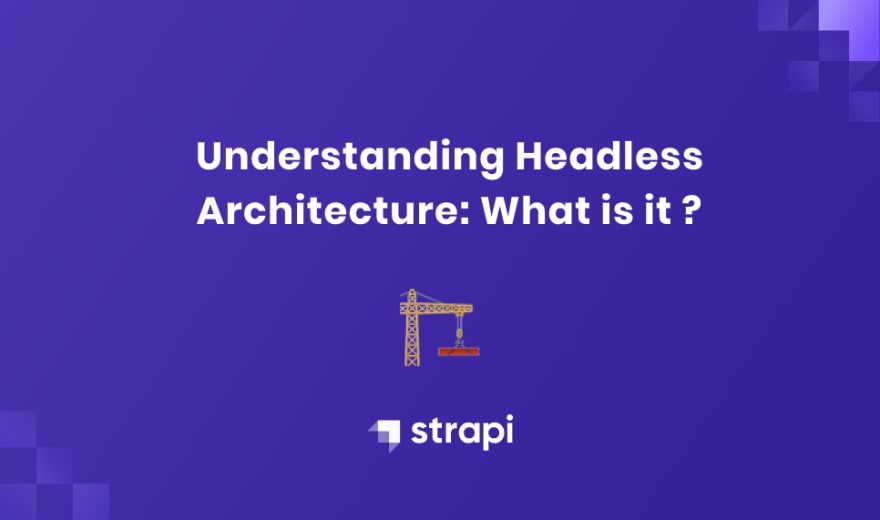
New, interactive ways to connect Internet users are flourishing, contributing to the overall growth of technology. Among the most prominent tools to make web design available to the masses were the first generation of CMS, including WordPress, Drupal, and Magento, to only name a few. These solutions have provided inexperienced and professional developers alike with wonderful options to bring out their content and to ensure it remains secure online. Although these traditional CMS still constitute a truly compelling alternative that many users find amply sufficient, headless architecture instills more agility into the mix. It provides a more powerful answer to the needs of businesses.
What Is Headless Architecture?
Headless architecture greatly simplifies multichannel publishing. While conventional CMS are perfect for publishing content to a website-type platform, they are not designed to optimize content workflow by allowing users to dynamically post to a variety of platforms. Nowadays’ users expect a seamless experience across devices and channels, which means that developers and content creators have to adapt to these demands. Headless architecture provides a compelling answer to a need for multiple systems to work together despite their different purposes and functionalities. This solution caters to true digital experiences by making multichannel possible.
How Does Headless Architecture Work?
Monolithic CMS relies on an architecture that features a front-end – also known as ‘head’ – and a back-end. The back-end represents the area where the content is stored and managed, whereas the front-end corresponds to the place where it is displayed. In this traditional architecture, both are highly co-dependent and, though it does work perfectly well, it does lack flexibility.
Headless architecture, on the other hand, does away with the predefined front-end system altogether. This means that there is no specific definition as to how the content is presented to the end-user and that creation and presentation are no longer coupled. As a result, the raw content can be published through any framework and accommodate any device, virtually anywhere.
To achieve this, the content is published through a web service or API designed to push it to the end user’s devices, which are responsible for interpreting this raw data and translating it into a visual experience. This introduces the notion of Content as a Service (CaaS), where the content is created once and provided in an XML or JSON format to presentation tiers that can request and publish it multiple times. Under a headless architecture, delivery formats are much more straightforward as the content can be managed across practically any of them. Essentially, front-end developers – not bound to a specific structure – are able to build an unlimited number of heads.
Top 3 Benefits of Headless Architecture
Though it implies a different level of complexity, headless architecture provides some much-needed framework flexibility and unique advantages.
Agnostic
With the freedom to choose whatever front-end framework and use any services the developers are used to, they experience a real creativity boost knowing that their work will not be limited by the chosen CMS, cloud, or database either. From a single back-end, any publishing channel becomes available.Scalability
Scalability, customisation and upgradability are limitless and future-proof. Lightweight and modular, headless architecture is entirely customisable, making it ideal for projects that are intended to grow exponentially.Agility
Knowing that they can depend on a powerful solution, content managers and front-end developers put out more creative content at a faster rate all while reducing costs.
All these benefits ultimately contribute to the enrichment of the user experience because developers can focus on designing amazing front-ends to fit their customers’ requirements.
Since the CMS database cannot be accessed from browser-related attack vectors, a headless CMS offers excellent results from a security perspective as well. Its architecture makes it less prone to DDoS (Distributed Denial-of-Service) attacks and the ability to opt-out of SQL also makes SQL injections impossible. Finally, every website created under a headless architecture is completely unique and therefore trickier to hack, since there is no obvious weakness that could stand out without knowing exactly what to look for.
Who Is Headless Architecture For?
Headless architecture is especially relevant for those who wish to embrace an omnichannel approach to deliver content to their users. It is also suitable for managing and delivering digital assets using a modern tech stack or for centralizing governance over content publishing across multiple channels. Perfect for high-performance digital applications, it provides developers with a solid way to implement their front-ends more freely and without compromise. Some use cases include:
As smart devices occupy a more and more prominent place and web projects become increasingly complex, the need for reliable development solutions is stronger than ever. Thanks to open-source headless CMS such as Strapi, developers can keep full control over their data, host their projects however they please, and customize their APIs, plugins, and routes in whatever way they see fit.
The headless architecture allows creators of digital experiences to let their imagination run wild all while ensuring their content is perfectly administered and guaranteeing seamlessness across channels. Strapi also focuses on freeing developers from traditional CMS technical debt by giving them the flexibility to use their favorite tech stack and tools to bring their projects to life. Intuitive and user-friendly, the interface it provides makes managing content, products, and business development a breeze, speeding up deployment in the process.







Top comments (0)